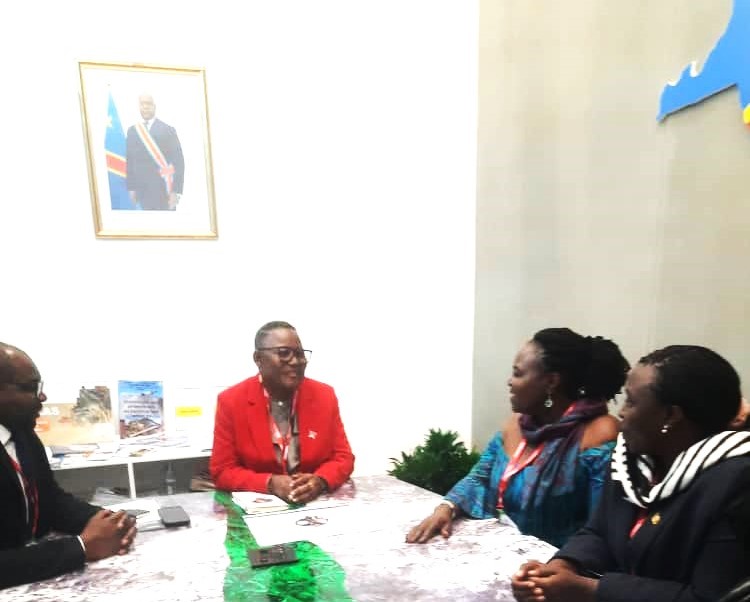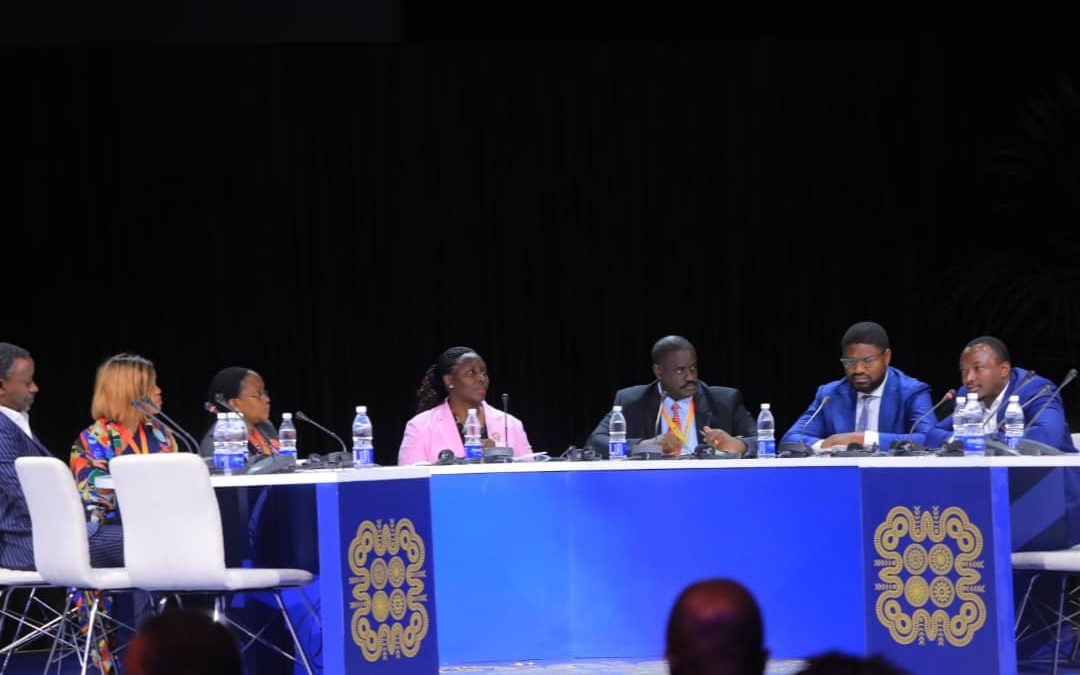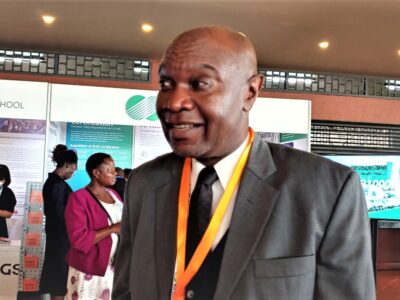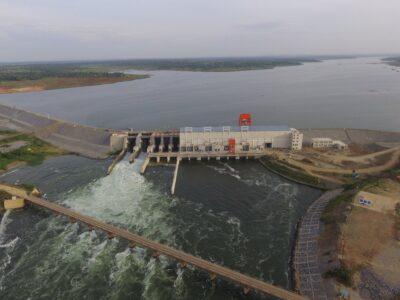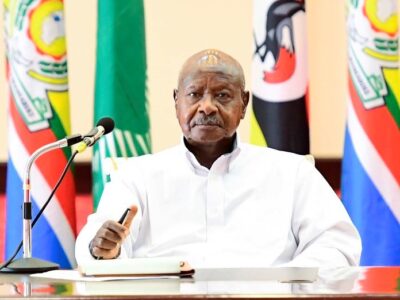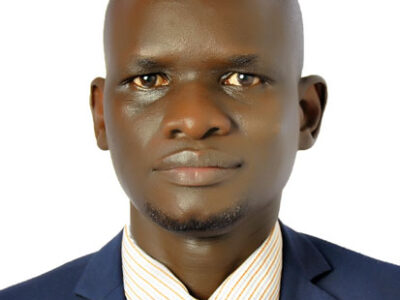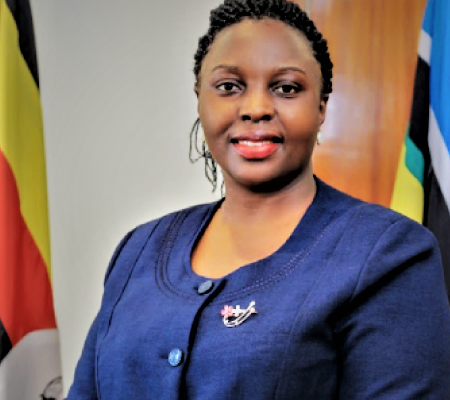
In August 2022, Irene Bateebe made one year as the permanent secretary in the ministry of energy and mineral development (MEMD). At the time, the sector was undergoing a number of reforms in the electricity and mining sector. In an interview with Deep Earth International, Bateebe told us her experience over the year, and what the ministry will focus on in the years ahead.
In August 2022, you made one year in office as the permanent secretary at the MEMD. What has been your experience so far?
This has been a very riveting year of learning and unlearning. Coming into office, we set a number of targets, some of which have been achieved and we continue to work on the rest.
The ministry [of Energy and Mineral Development] has made great strides in the last one year, building on the achievements that had been made.
A number of laws have been enacted including the East African Crude Oil Pipeline (EACOP) special provisions Act, the Electricity Amendment Act and the Mining and Minerals Act. These laws will go a long way to ensuring the re-organisation of the sector to continue achieving the set goals and targets.
We have continued to work on running projects to ensure grid expansion, power reliability, last mile connection and efforts to continue reducing the tariffs. At the time we came in, we were reporting access to electricity of about 57 per cent, with 24 per cent on grid and the difference was off grid.
But with the impact of Covid-19 and of course the population demographics, those figures have changed. So, you have 57 per cent, but with 19 per cent on grid and 38 per cent on off-grid.
So, what does that mean? That means we came in at a time when the economy was recovering from Covid-19. That also had an impact on the energy and mineral sub sector in many ways. However, as the economy recovers, we continue to see improvement in the sector.
So, for the last one year, our focus has been on how to keep this sector afloat to support the recovery of the economy. In light of that, we have continued to ensure that projects such as the Karuma hydropower dam are concluded and plans are underway to commence the commissioning of the plant in October this year. We continue to attract investment in the sector and we continue to witness increased investor interest.
What special reforms have you overseen during this time?
We came in at a time when a number of reforms had been triggered. And we needed to ensure that those continue. I will start with the major one: the mainstreaming of the Rural Electrification Agency into the ministry of Energy and Mineral Development.
At the time when we came in, the Rural Electrification Fund was in the process of being moved into the ministry. There was a debate in Parliament on how to manage the Rural Electrification Fund.
However, for the last one year, we have been transiting in line with the Statutory Instrument that provided for the transition of the Rural Electrification Program. We had to finalize the structure for the new department. We worked with the ministry of Public Service, and finally cabinet approved that structure.
What does that mean? That means that for the next one month, we shall be working on finally absorbing this group into the ministry, in the department of rural electrification under the Directorate of Energy Resources. This is important because the rural electrification is our vehicle for grid expansion in terms of distribution and last mile connections.
We are not saying that this transition will not have any hiccups; they will be there. But we want them to be as manageable as possible, and not destabilize electrification. Working with the ministry of Public Service, we have put in place a change management strategy to handle this change.
The other issue that has kept us engaged is managing the power generation and distribution concessions. You will recall 20 years ago when we put in place the Electricity Act of 1999 that came with a number of reforms, especially when we unbundled and created the generation, distribution and transmission segments.
At the same time, we leased out two concessions, namely, for the Kira/Nalubaale power generation plant to Eskom Limited and distribution on the national grid to Umeme Limited.
The generation concession will end in March next year whereas the Umeme concession is coming to its natural end in 2025.
So, during this one year, we have been preparing for how to manage the natural end of these two concessions and that has really kept us equally busy.
For the Umeme concession, this is still under discussion in government. And we should be able to indicate the next steps on the management of the concession soon.
We continue to grapple with challenges arising from vandalism of our infrastructure and we are working with different stakeholders to ensure this is addressed. The new Electricity Amendment Act has provided for punitive measures for vandals and this should contribute to addressing this vice.

Harrison Mutikanga, CEO UEGCL addresses the Prime Minister Robinah Nabbanja and Bateebe
Recently, Gridworks became the first private company to participate in the transmission segment of electricity. How should the market interpret this? Are there opportunities for other companies?
Under the new Electricity Amendment Act, we opened up the transmission to private investments and we are finalizing the framework to ensure prudent investment in the sector by ensuring the tariffs are well managed.
Gridworks will implement a pilot project focused on substation development. We shall be studying a number of things like the project delivery time, how the private sector handles community issues and impact on power tariffs.
Won’t the merging of the transmission and generation companies, and reintegrating them back into the ministry create a conflict of interest especially between the generator and the off-taker of the electricity – in this particular case the transmission segment? Now, there is a suggestion of putting in place an independent system operator.
First of all, I need to clarify that we plan to create a limited liability company incorporated under the Companies Act.
Regarding the conflict of interest, we have studied a number of utility models in other countries where the system operator is independent of the national utility company.
We are assessing the different options and we will make a well-informed decision on the best structure. It is also important to note that we have a robust regulator that ensures compliance with the set law and regulations.
With all these reforms, what are your targets, especially with access to electricity?
We do have targets enshrined in the National Development Plan III (NDP III). We targeted by 2030 to have achieved universal access; that is 100 per cent electrification for the existing population.
And in terms of the intermediate milestones, we targeted that by 2025 we should have clocked 60 per cent electrification in line with the NDP. So, we have even revised our targets to reset this 60 per cent to 80 per cent, given the current electrification rate of 57 per cent.
We are structuring new funding of $630 million, which will contribute to meeting the set electrification target. This is going to help us accelerate grid expansion and last mile connection. So, the target is to achieve universal access by 2030.
We have just completed our National Electrification Strategy that indicates that for the country to achieve universal access to electricity, we need to invest about $4 billion not just in the distribution network, but also in transmission, which is quite significant.
That is why we opened it up [to private players] to be able to attract private financing to supplement the public funding.
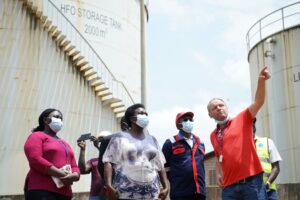
Bateebe and MEMD Minister Ruth Nankabirwa touring the Jacobsen thermal power plant in Namanve
Turning to the oil industry, when should we expect the financial close for Uganda’s oil project, especially the crude oil pipeline, and why has it taken so long?
When the final investment decision (FID) was taken in February this year, the different entities in the upstream and the EACOP committed that they will do whatever it takes to make sure that funding is available for the project.
Typically, from the FID, within six months, one should be able to achieve financial close. Discussions on financing of the project are progressing well and the target of first oil in 2025 should be met.
We continue to address the negative publicity on the oil and gas projects. The project has ensured compliance in terms of environment, human rights and social protection. We continuously clarify that comprehensive ESIAs have been undertaken and where there is a risk, the mitigations as approved by NEMA will be implemented.
We continue to clarify on the role of the oil and gas project in achieving our energy transition/integration goals including production of LPG, to substitute usage of biomass.
There are some local service providers who are worried of missing out on some jobs in the oil industry. Is this something that concerns you?
We have put in place a clear policy and laws to promote national content. We have gone ahead to ringfence a number of services for local companies.
Efforts have also been made to ensure the local companies strengthen their competences to meet the requirements of the sub-sector through skilling and stakeholder engagement.
We encourage companies to participate where they are most competent both technically and financially. The oil companies are required to advertise for all the opportunities to ensure transparency in the selection process.
Where companies are aggrieved in the different procurements, we do have a redress mechanism working with the Petroleum Authority of Uganda.
How far are you in creating a local content oil fund to help Ugandan companies access cheaper capital and competitively participate in the sector?
The local content fund emanated from the National Content Policy. The way it is designed, a portion of it will be drawn from contractors, and where possible government of Uganda will provide some seed capital.
There has been internal discussion and the Ministry of Finance has guided us on how we should proceed on the fund. We are preparing to submit the Local Content Fund Bill to Cabinet for consideration.
The developments in the Kilembe bidding process, the Wagagai gold project and the rare earths elements projects in Makuutu point to a recovering mining industry. However, grumblings over the unprocessed minerals exports ban continue. How would you assess the minerals and mining industry so far?
The three mining projects are changing the mining landscape of Uganda. We believe the new Mining and Mineral Act will go a long way in supporting the development of the projects.
We want to ensure the projects progress smoothly to the next stages.
Just recently, we attended public hearings in Bugweri, where the Makuutu rare earths project is situated to support Rwenzori Rare Metals (RMM) and IonicRE address issues related to obtaining land rights from the affected persons.
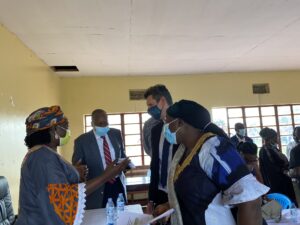
(L-R) Nankabirwa, RRM Chairman Richard Kaijuka, RRM CEO Warren Tregurtha and Bateebe at the public hearings in Bugweri
It is important that all the mining investors get a social license with the locals so that their projects can coexist with the host communities.
Wagagai is also doing tremendous work on the gold front. Their mine needs a dedicated electricity line so that the operations go on unhindered; and we are in the process of ensuring this is addressed.
The development of Kilembe Mines is equally key given the appreciating global prices of copper and cobalt.
Together with the Ministry of Finance, we are undertaking a selection process for a developer for the mine. We expect to select a robust, financially capable and reputable company that will progress the project.
We are also hoping that a solution will be found for the phosphates project in Sukulu, Tororo. We have been engaging at the highest level with China (where the investor comes from) to have all the issues resolved.
As regards the embargo on the export of raw minerals, this policy direction is meant to ensure value addition in order to retain value in country. We are working with the different licenses for them to appreciate this policy direction.
There is an ongoing review of the different licenses to understand the implications of the ban. The affected companies will subsequently be engaged to address their concerns.
This interview first appeared in our sister publication the Deep Earth Wrapper for August 2022.



